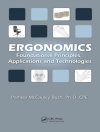Silicon Photonics: Electromagnetic theory is a concise introduction to the fundamental theories of integrated optics that focuses on modern silicon photonic technology. It includes well-known general theories on properties of waveguides and couplers as well as new theories on high-index contrast waveguides, directional couplers, and micro-ring resonators. The book may be used as a first introduction to integrated optics, with only basic electrodynamics as prerequisite. It would fit well as lecture material in a short introduction course, as additional material in an extensive electrodynamics course, or as fundamental background material in a more applied course. The later chapters are of interest to experts in the field of integrated optics that want to learn the latest theories for high-index contrast waveguides such as silicon photonic waveguides.
Inhaltsverzeichnis
Preface
Acknowledgments
Abstract
Further reading
Outline and followed literature
Introduction
Waveguides
Components
Computational methods
Devices
Coupled mode theory following Hardy & Streifer
Lossless transmission matrix
Semiconductor physics of pn-junctions
References
Über den Autor
Wouter J Westerveld received his MSc in applied physics and Ph.D. degree from Delft University of Technology, The Netherlands in 2014. He has worked in the fields of sound control, ultrasonic imaging, silicon integrated photonics, and silicon integrated opto-mechanical sensors to sense strain and ultrasound. His research interest is in applied physics with special interest in photonics, acoustics and microsystems.Paul Urbach graduated from the University of Groningen in the Netherlands, and completed his Ph D thesis at the same university on the optimization of hydrodynamic propulsion. In 1986, he joined Philips Research Laboratory in Eindhoven, the Netherlands and in 1994 he became principal scientist. Since January 2008 he has been full professor and head of the Optics Research Group of TUDelft.












